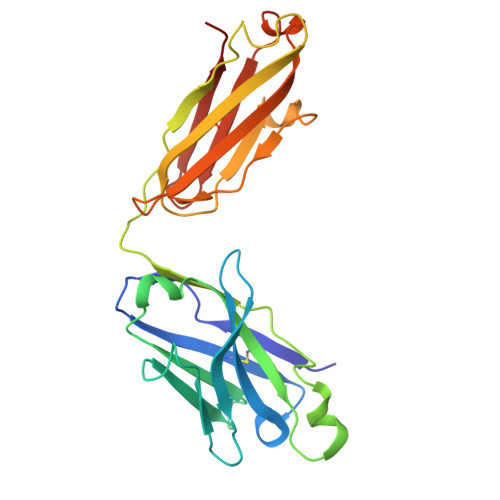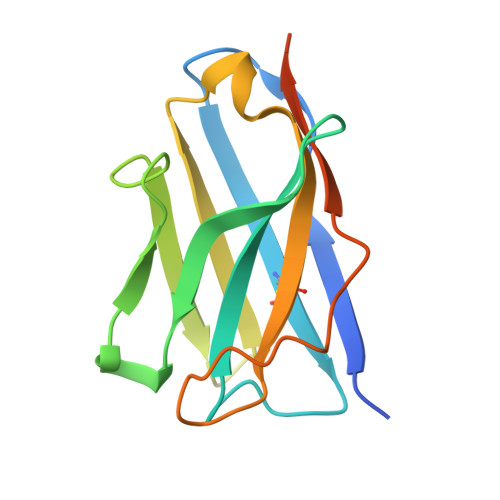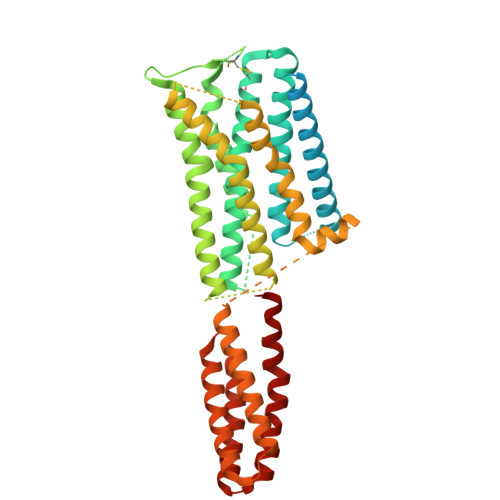Inactive structures of the vasopressin V2 receptor reveal distinct binding modes for Tolvaptan and Mambaquaretin toxin.
Fouillen, A., Bous, J., Couvineau, P., Orcel, H., Mary, C., Lafleur, L., Pierre, T., Mendre, C., Gilles, N., Schulte, G., Granier, S., Mouillac, B.(2025) Nat Commun 16: 3899-3899
- PubMed: 40274867
- DOI: https://doi.org/10.1038/s41467-025-59114-5
- Primary Citation of Related Structures:
9HAP, 9HB3 - PubMed Abstract:
Inhibitors of the arginine-vasopressin (AVP) V2 receptor (V2R) are key therapeutic compounds for treating hyponatremia or polycystic kidney diseases. Rational drug design based on experimental G protein-coupled receptor structures is a powerful avenue to develop better drugs. So far, the lack of inhibitor-bound V2R structures has impaired this strategy. Here we describe the cryo-electron microscopy structures of the V2R in complex with two selective inverse agonists, the non-peptide Tolvaptan (TVP) and the green mamba snake Mambaquaretin toxin (MQ1). Both ligands bind into the orthosteric binding site but with substantial differences. TVP binds deeper than MQ1, and directly contacts the toggle switch residue W284 6.48 in the transmembrane domain 6. The Kunitz-fold toxin displays extensive contacts with extracellular and transmembrane residues. As anticipated from TVP and MQ1 pharmacological properties, both structures represent inactive V2R conformations. Their comparison with those of the active AVP-bound V2R reveals the molecular mechanisms modulating receptor activity. The mini-protein MQ1-bound V2R structure suggests a new pharmacology approach for treating water homeostasis and renal diseases.
- Institut de Génomique Fonctionnelle, Université de Montpellier, CNRS, INSERM, Montpellier cedex 5, France.
Organizational Affiliation:




















